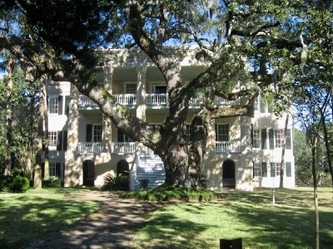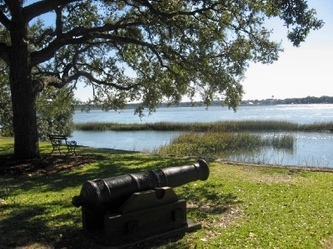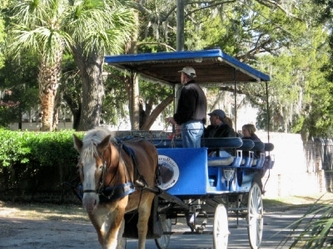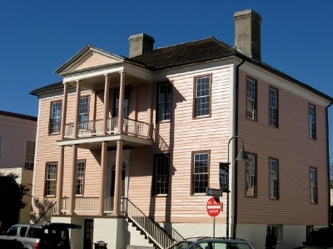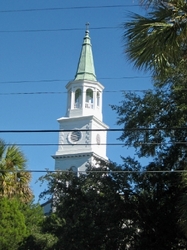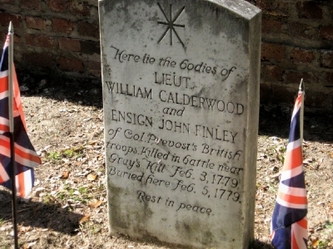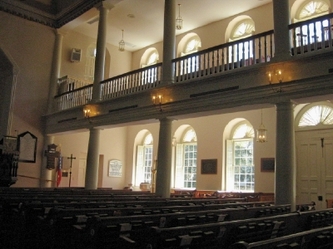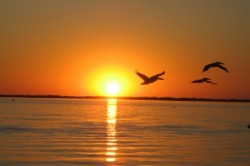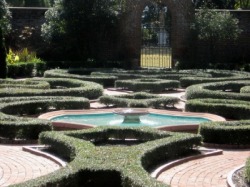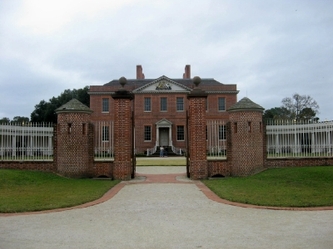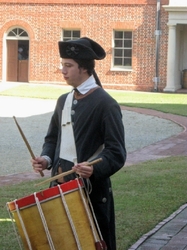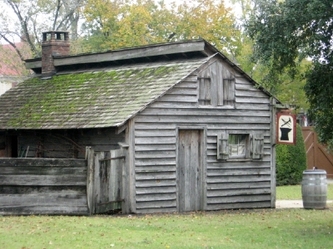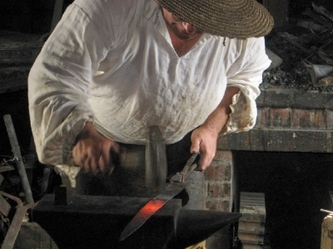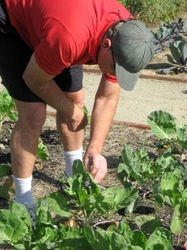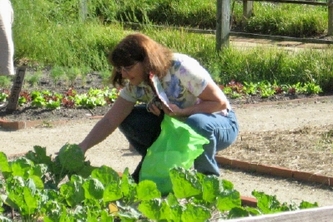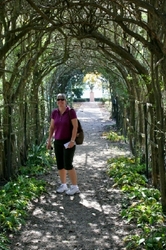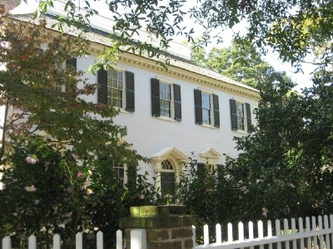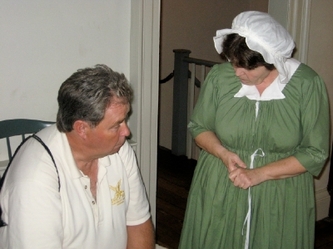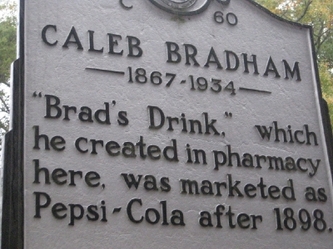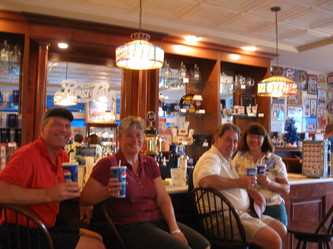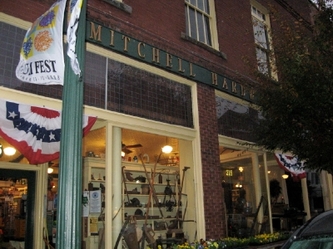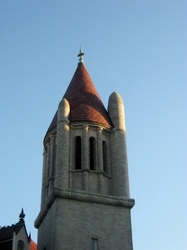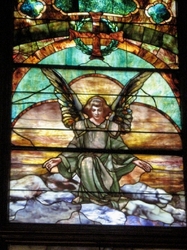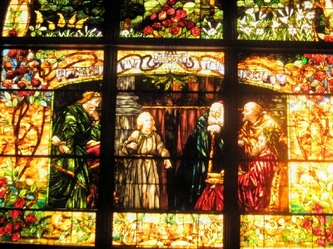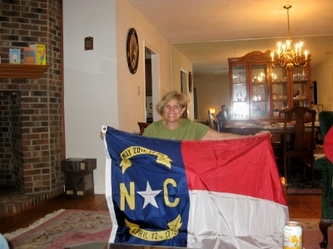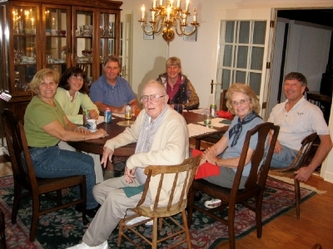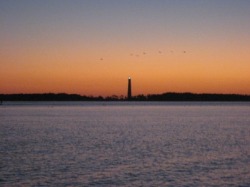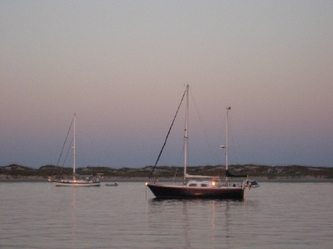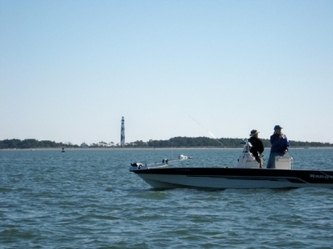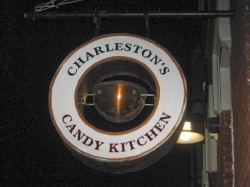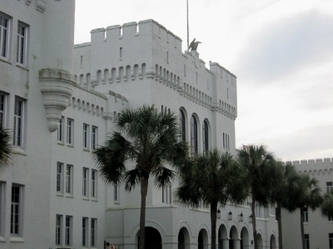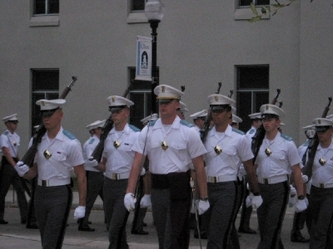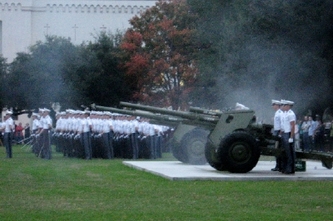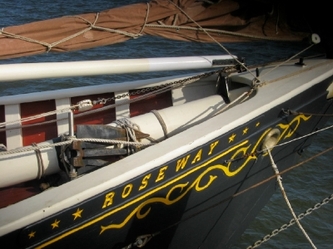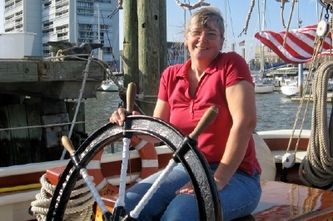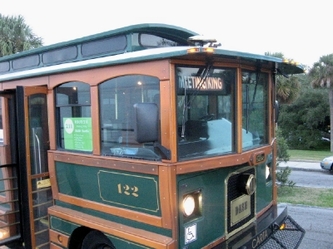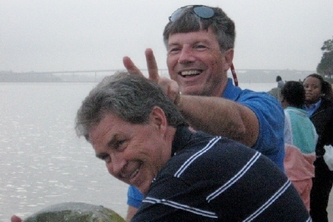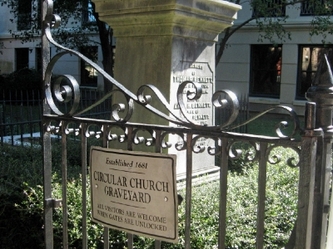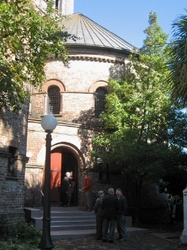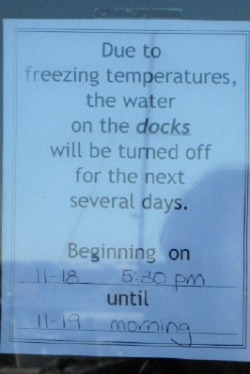
Although we’ve arrived in Florida, the warm weather we normally associate with this location is still pretty elusive. Thanks to our little heaters and some blankets, we’re staying warm though. We made it as far south as Jacksonville, before pulling in for an extended stay, while we travel north to visit family for the holidays. On the way south, we visited Beaufort, SC (pronounced byew-fort), our first time visiting this historic city.
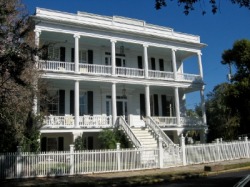
Beaufort, SC
Beaufort sits on a bend on a river of the same name in southern SC, about 10 miles inland from Port Royal Sound and the Atlantic Ocean. The city is almost 300 years old, and has survived 2 wars, Indian uprisings and a few storms over the centuries. It has so many historic homes dating back to the 19th century that much of the downtown is considered a National Historic district. As with many cities we have visited with well-preserved historic structures, the reason they remain intact is a result of both the city’s good and bad fortunes in the preceding centuries.
Perhaps the most significant element of good fortune Beaufort experienced was the fact that it saw so little action during the Civil War. Instead, the city was taken by the Union forces without any significant resistance, and spent the war under Union occupation. This and the respectful treatment of the city by the occupying army left much of the property unharmed by the ravages of war, unlike so many other southern cities.
But it usually takes some bad fortunes to keep a city from clearing out the old in favor of the new. For Beaufort, this came after the war, as the economy struggled to recover with the loss of the large plantations and the markets derived from supporting them and selling their crops. The result of this downturn was that little new capital investment was possible. This meant that it was cheaper to repair and refurbish the buildings that already existed, rather than raze them and replace with newer structures.
This made us the beneficiaries of Beaufort’s good and bad times, as we strolled the oak-lined streets past dozens of homes dating back to the 1800’s and even earlier. One of the oldest buildings in town is St. Helena’s Episcopal Church, which dates back to the 1700’s. In her graveyard are the graves of 2 British soldiers killed in a Revolutionary War skirmish, as well as those of Civil War soldiers, each marked by the flag under which he fought. Inside the recently restored church sanctuary, a well-informed docent told us about the church’s history and invited us to join them for a chicken dinner that night.
Beaufort sits on a bend on a river of the same name in southern SC, about 10 miles inland from Port Royal Sound and the Atlantic Ocean. The city is almost 300 years old, and has survived 2 wars, Indian uprisings and a few storms over the centuries. It has so many historic homes dating back to the 19th century that much of the downtown is considered a National Historic district. As with many cities we have visited with well-preserved historic structures, the reason they remain intact is a result of both the city’s good and bad fortunes in the preceding centuries.
Perhaps the most significant element of good fortune Beaufort experienced was the fact that it saw so little action during the Civil War. Instead, the city was taken by the Union forces without any significant resistance, and spent the war under Union occupation. This and the respectful treatment of the city by the occupying army left much of the property unharmed by the ravages of war, unlike so many other southern cities.
But it usually takes some bad fortunes to keep a city from clearing out the old in favor of the new. For Beaufort, this came after the war, as the economy struggled to recover with the loss of the large plantations and the markets derived from supporting them and selling their crops. The result of this downturn was that little new capital investment was possible. This meant that it was cheaper to repair and refurbish the buildings that already existed, rather than raze them and replace with newer structures.
This made us the beneficiaries of Beaufort’s good and bad times, as we strolled the oak-lined streets past dozens of homes dating back to the 1800’s and even earlier. One of the oldest buildings in town is St. Helena’s Episcopal Church, which dates back to the 1700’s. In her graveyard are the graves of 2 British soldiers killed in a Revolutionary War skirmish, as well as those of Civil War soldiers, each marked by the flag under which he fought. Inside the recently restored church sanctuary, a well-informed docent told us about the church’s history and invited us to join them for a chicken dinner that night.
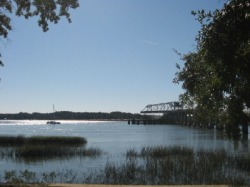
A sailboat approaches the Ladies Island bridge southbound.
Ladies Island Bridge - Closed Until Further Notice
The indefinite closing of an opening bridge on the waterway is, at best, an unsettling inconvenience to the many sailboats that travel it. With so many older opening bridges in desperate need of repair, the Coast Guard’s securite announcements are becoming more frequent. It was with an incredible sense of relief and dismay that we heard this announcement for Beaufort’s Ladies Island Bridge – the day after we passed through.
The Ladies Island Bridge crosses from downtown Beaufort across to Ladies Island. Although it is an opening bridge, it is tall enough for most trawlers and powerboats to pass under, but not for sailboats and a few commercial tugs and fishing boats that travel the Beaufort river. While we were touring downtown the day after we arrived, we learned that the bridge had had trouble opening, was stuck for a period of time and now was closed to boat traffic indefinitely. The next morning, as we made preparations to leave for our outside run to Fernandina Beach, we heard the Coast Guard securite announcement about the bridge closing indefinitely.
While the maintenance people worked on the bridge, sailboats started accumulating in the river above the bridge, anchoring wherever possible. A tug and barge tied up to the fenders of the fixed bridge below Ladies Island, just off the dock of Port Royal Marina, where we were staying. Confusing announcements were made and then retracted about a possible opening. First it was going to be 10 and 2. Then 10am passed without an opening. Then it was going to 12 noon and maybe 3 or maybe not. When it became apparent that 12 noon was going to be the first opening in 24 hours, the commercial tugs began preparing to move. They were going to be traveling with the current behind them and with it near its max velocity. This would mean they have to pass through the narrow opening with the least amount of control as a result. Usually they can have an opening on demand, which allows them to pick the river’s state. Several tense conversations were held with the bridge tender to determine whether this would be safe.
As we left the dock to head for the ocean, the boats started moving through the bridge behind us. The sailboats had to clear the channel above the bridge to allow the tugs through and then they began filing through. Shortly after the bridge closed, we heard the call of a sailboat that didn’t make it. The bridge tender told him to standby. The bridge would probably open sometime in a few hours. She just didn’t know when.
We were glad that the drama was all behind us as we made for the open ocean.
The indefinite closing of an opening bridge on the waterway is, at best, an unsettling inconvenience to the many sailboats that travel it. With so many older opening bridges in desperate need of repair, the Coast Guard’s securite announcements are becoming more frequent. It was with an incredible sense of relief and dismay that we heard this announcement for Beaufort’s Ladies Island Bridge – the day after we passed through.
The Ladies Island Bridge crosses from downtown Beaufort across to Ladies Island. Although it is an opening bridge, it is tall enough for most trawlers and powerboats to pass under, but not for sailboats and a few commercial tugs and fishing boats that travel the Beaufort river. While we were touring downtown the day after we arrived, we learned that the bridge had had trouble opening, was stuck for a period of time and now was closed to boat traffic indefinitely. The next morning, as we made preparations to leave for our outside run to Fernandina Beach, we heard the Coast Guard securite announcement about the bridge closing indefinitely.
While the maintenance people worked on the bridge, sailboats started accumulating in the river above the bridge, anchoring wherever possible. A tug and barge tied up to the fenders of the fixed bridge below Ladies Island, just off the dock of Port Royal Marina, where we were staying. Confusing announcements were made and then retracted about a possible opening. First it was going to be 10 and 2. Then 10am passed without an opening. Then it was going to 12 noon and maybe 3 or maybe not. When it became apparent that 12 noon was going to be the first opening in 24 hours, the commercial tugs began preparing to move. They were going to be traveling with the current behind them and with it near its max velocity. This would mean they have to pass through the narrow opening with the least amount of control as a result. Usually they can have an opening on demand, which allows them to pick the river’s state. Several tense conversations were held with the bridge tender to determine whether this would be safe.
As we left the dock to head for the ocean, the boats started moving through the bridge behind us. The sailboats had to clear the channel above the bridge to allow the tugs through and then they began filing through. Shortly after the bridge closed, we heard the call of a sailboat that didn’t make it. The bridge tender told him to standby. The bridge would probably open sometime in a few hours. She just didn’t know when.
We were glad that the drama was all behind us as we made for the open ocean.
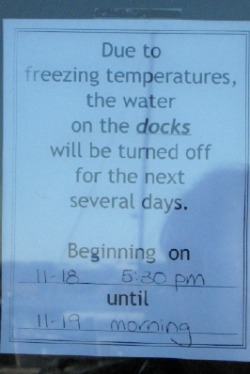
Notice to boaters that water will be turned off due to freezing temperatures.
Beaufort, SC to Fernandina Beach, FL
It had been cold in Beaufort, so cold that the water to the docks had been turned off to prevent them from freezing at night. We were ready to get further south. We were far enough south that the jump to the St. Mary’s inlet at the Georgia-Florida border was only a 20 hour run. This meant a later start from Beaufort around noon so we would arrive after sunup the next day. Just before sunset, we were passing the busier Tybee Roads channel to Savannah. We saw 3 larger ships on the horizon. It became apparent that 2 were anchored, but the 3rd one was underway and appeared that it would come uncomfortably close. After Cathy had some troubles getting AIS working, she woke Dave to help with the problem. Fred was calling the ship on 13 and 16 and getting no response. With his radar (and later confirmed by our AIS), he determined we were going to have a closest point of approach of ¼ mille. Too close. With our AIS problems, we couldn’t get the ship’s name, but Dave saw the pilot boat coming to meet him. We contacted the pilot boat, got the ship’s name and finally got him to answer us. He slowed his speed to allow us to cross in front with more room. Dave later complained to the Coast Guard about the ship’s unresponsiveness.
It had been cold in Beaufort, so cold that the water to the docks had been turned off to prevent them from freezing at night. We were ready to get further south. We were far enough south that the jump to the St. Mary’s inlet at the Georgia-Florida border was only a 20 hour run. This meant a later start from Beaufort around noon so we would arrive after sunup the next day. Just before sunset, we were passing the busier Tybee Roads channel to Savannah. We saw 3 larger ships on the horizon. It became apparent that 2 were anchored, but the 3rd one was underway and appeared that it would come uncomfortably close. After Cathy had some troubles getting AIS working, she woke Dave to help with the problem. Fred was calling the ship on 13 and 16 and getting no response. With his radar (and later confirmed by our AIS), he determined we were going to have a closest point of approach of ¼ mille. Too close. With our AIS problems, we couldn’t get the ship’s name, but Dave saw the pilot boat coming to meet him. We contacted the pilot boat, got the ship’s name and finally got him to answer us. He slowed his speed to allow us to cross in front with more room. Dave later complained to the Coast Guard about the ship’s unresponsiveness.
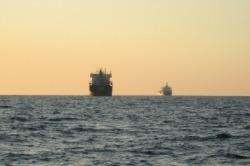
Anchored ships off the Savannah entrance.
Other than that, we had a calm day and early evening, until the winds started building behind us as the night wore on, eventually gusting to 30 knots by the time the sun rose the next morning. We were glad to tie up to a mooring ball in Fernandina, although it took us 2 tries in the wind to secure it.
Tucked in at Palm Cove Marina
We said goodbye to Pat and Fred for a bit at Fernandina Beach, as they headed to Vero Beach for Thanksgiving. We were going to cover that ground a little slower, but reconnect with them later. However, some family news changed our plans a little and made us tie up to a dock near Jacksonville, at Palm Cove Marina, where we’ve been since the Sunday before Thanksgiving. We met a few couples on the dock who are traveling as well, but most have either moved on or are leaving their boats here for a bit while they travel. The rest of the boats are mostly locals, so there’s not a lot of activity on the docks except on weekends. We spent Thanksgiving here and treated ourselves to a Chinese restaurant’s buffet dinner. Very untraditional, although they did have turkey on the buffet. We’re within walking distance of several stores, so we also managed to get some Christmas shopping in. Soon, we’ll be taking the train north and will leave Orion here for the holidays.
Based on Yanmar’s service bulletin about hard-starting engines (such as ours), Dave ordered the fuel return line retrofit kit (which removes the check valve). He had it installed as well, but it’s too early to say whether it will work or not. We’re keeping our fingers crossed.
We’re still a little too far north apparently, because the shorts and T-shirts are mostly stacked in our lockers, where they’ll stay for a while now.
Tucked in at Palm Cove Marina
We said goodbye to Pat and Fred for a bit at Fernandina Beach, as they headed to Vero Beach for Thanksgiving. We were going to cover that ground a little slower, but reconnect with them later. However, some family news changed our plans a little and made us tie up to a dock near Jacksonville, at Palm Cove Marina, where we’ve been since the Sunday before Thanksgiving. We met a few couples on the dock who are traveling as well, but most have either moved on or are leaving their boats here for a bit while they travel. The rest of the boats are mostly locals, so there’s not a lot of activity on the docks except on weekends. We spent Thanksgiving here and treated ourselves to a Chinese restaurant’s buffet dinner. Very untraditional, although they did have turkey on the buffet. We’re within walking distance of several stores, so we also managed to get some Christmas shopping in. Soon, we’ll be taking the train north and will leave Orion here for the holidays.
Based on Yanmar’s service bulletin about hard-starting engines (such as ours), Dave ordered the fuel return line retrofit kit (which removes the check valve). He had it installed as well, but it’s too early to say whether it will work or not. We’re keeping our fingers crossed.
We’re still a little too far north apparently, because the shorts and T-shirts are mostly stacked in our lockers, where they’ll stay for a while now.
